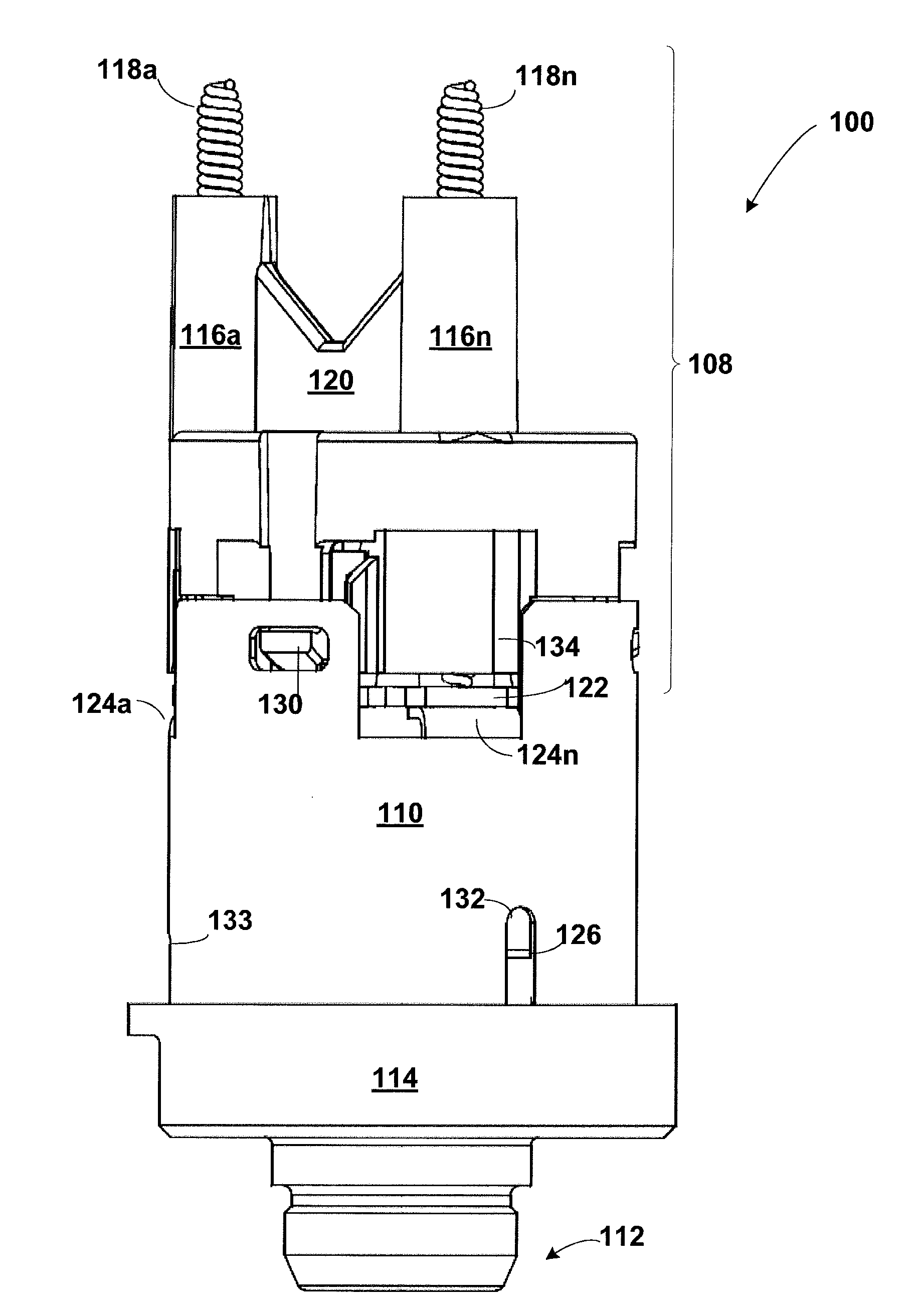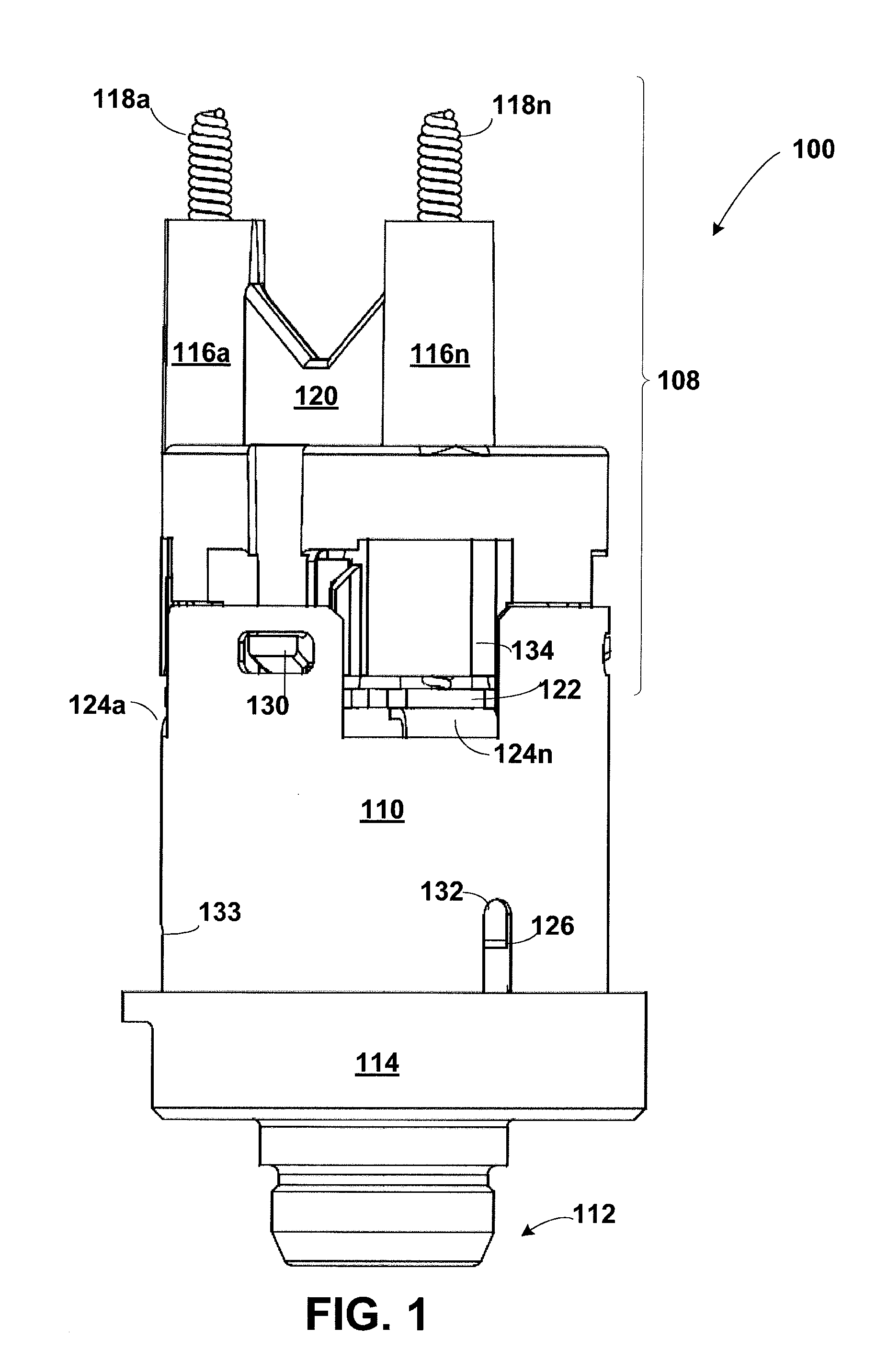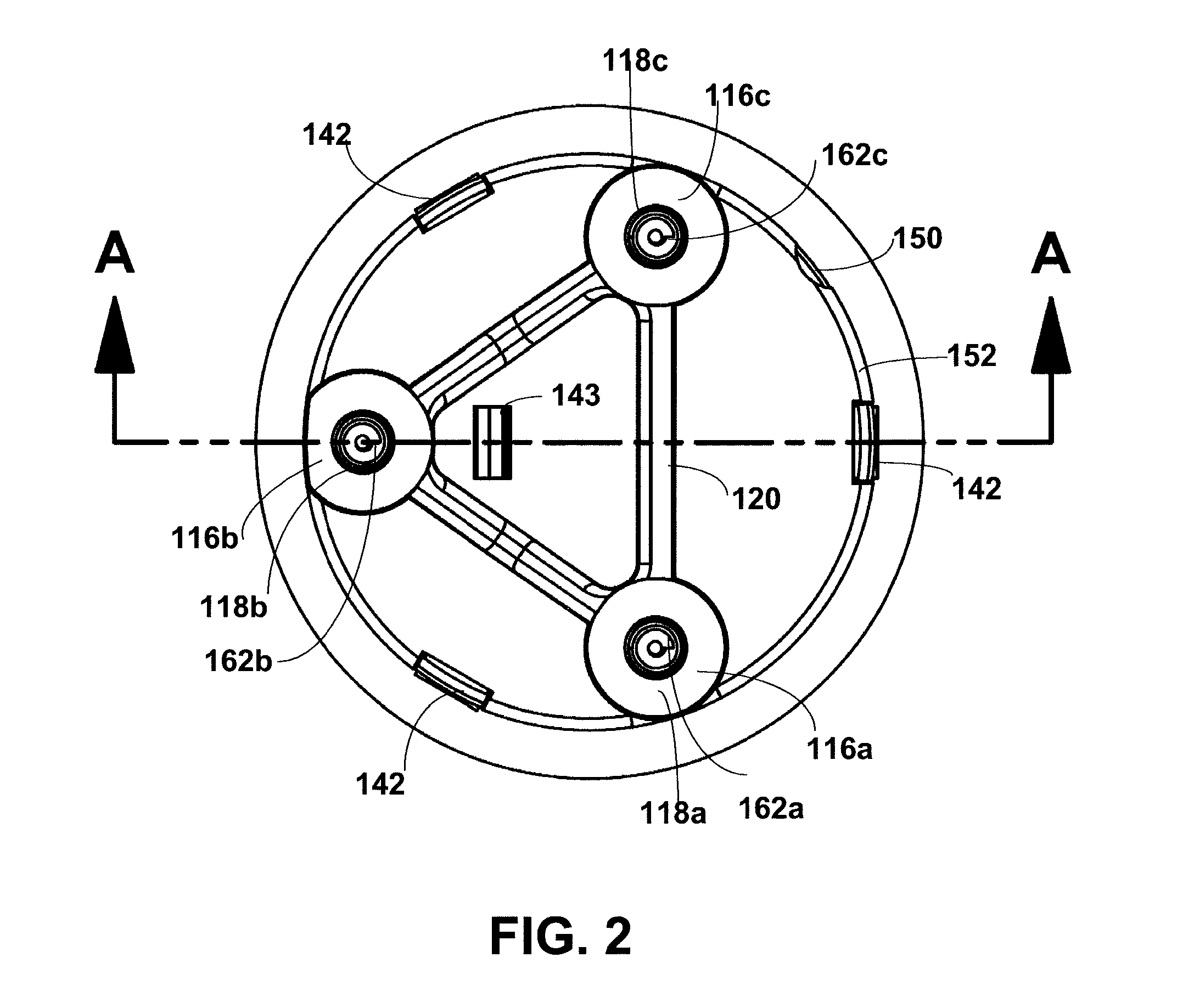Pressure sensor
a technology of pressure sensor and pressure gauge, which is applied in the direction of fluid pressure measurement using elastically deformable gauges, instruments, and fluid pressure measurement by mechanical elements, etc. it can solve the problems of poor welds, mechanical damage to bond wires or bonds, and unwanted open or intermittent contacts, so as to facilitate the inspection of strain gauges, facilitate the bonding and visibility of sensor contacts, and reduce problems
- Summary
- Abstract
- Description
- Claims
- Application Information
AI Technical Summary
Benefits of technology
Problems solved by technology
Method used
Image
Examples
Embodiment Construction
[0030]Embodiments of the invention disclosed herein provide for a novel pressure sensor for use in measuring pressure. Embodiments disclosed herein include a newly designed gel flow barrier that isolates certain printed circuit board (PCB) features and components from protective gel applied to other areas of the PCB. Additionally, embodiments include a newly designed contact spring adapted to facilitate manufacture of the pressure sensor while minimizing the effect of tolerance stack-up. In particular, in one embodiment, a support ring includes planar mounting tabs which provide stable support for a single electronics board and support for elastic contact members, for example, double-ended symmetrical springs having a conical taper at both ends.
[0031]FIG. 1 illustrates a pressure sensor 100 configured in accordance with one example embodiment. The pressure sensor 100 includes a contact housing sub-assembly 108 which includes an upper spring guide 120 (also referred to as upper conta...
PUM
| Property | Measurement | Unit |
|---|---|---|
| volume | aaaaa | aaaaa |
| flexible | aaaaa | aaaaa |
| mechanical stresses | aaaaa | aaaaa |
Abstract
Description
Claims
Application Information
 Login to View More
Login to View More - R&D
- Intellectual Property
- Life Sciences
- Materials
- Tech Scout
- Unparalleled Data Quality
- Higher Quality Content
- 60% Fewer Hallucinations
Browse by: Latest US Patents, China's latest patents, Technical Efficacy Thesaurus, Application Domain, Technology Topic, Popular Technical Reports.
© 2025 PatSnap. All rights reserved.Legal|Privacy policy|Modern Slavery Act Transparency Statement|Sitemap|About US| Contact US: help@patsnap.com



